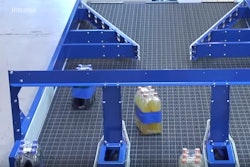
Today, product design continues to rapidly evolve. With 3D printing and CNC machining increasing in popularity, the expected time to market continues to become shorter and shorter. There is also more competition than ever to create unique designs from established companies, start-ups and those using funding platforms like Kickstarter and Indiegogo. On top of this is the fact that there are more expectations for customization from consumers than ever before. Henry Ford’s famous saying, “You can have any color so long as it is black” would likely not go over well in today’s market. With these drivers in mind, product developers are shifting away from mass production and toward the practice of low-volume manufacturing. So the obvious question is — what is low-volume manufacturing?
Depending on the process, tooling and materials being used, low-volume manufacturing generally encompasses the production range of 50 to 100,000 parts. Low-volume manufacturing can be leveraged by companies of any size, from start-ups to entrepreneurs to large manufacturers. Below are the top four benefits that low-volume manufacturing has to offer:
No. 1 - Low-Volume Manufacturing Saves Money
Contrary to what most people think, it’s not always true that buying in bulk saves money. This may work for purchasing household supplies, such as 50 rolls of toilet paper or five gallons of ketchup from warehouse superstores. However, when it comes to manufacturing, cost per unit is highly dependent on the materials that are being used.
Take tool steel for example. Tool steel refers to a range of carbon and alloy steels that are hard, difficult to deform and resistant to scrapes and scuffs. Tool steel is expensive to utilize and requires a company to make large investments in the material if it is going to be used to mass-produce parts – especially for pressure die casting or injection molding. To withstand the process of large-scale production, the tool steel also needs to be hardened using heat treatment, and sometimes even coated using physical vapor deposition (PVD).
With this in mind, low-volume manufacturing up to 100,000 pieces may be a great way to avoid a large investment. If the final part or product doesn’t need to endure high levels of stress, then it would be more economical to use a less durable type of tool steel and have a low-volume manufacturer heat treat and machine it. Although a less durable tool steel would not be able to meet the rigors of large-scale production, it would be suitable for use by a low-volume manufacturer. This process will still produce a high-quality part, while saving money. Even on the rare occasion where the tool starts to wear, in most cases, it would be easier and cheaper to replace.
In addition, large-volume production facilities often impose minimum order requirements to offset their heavy production investments and cover set up costs. Since a low-volume manufacturer has a much lower overhead, products can be made without demanding a minimum order. This is particularly beneficial for companies looking to get a part or product created on a small scale. Low-volume production also becomes ideal if a company knows that the design of a part may change and would like to avoid being inundated with outdated inventory created by a large manufacturers’ minimum order requirements.

No. 2 - Low-Volume Manufacturing Gives Companies Design Flexibility
Low-volume manufacturing, rapid prototyping and 3D printing are all great options that provide design flexibility that mass manufacturing cannot match. Since products are manufactured in smaller quantities, it doesn’t greatly impact the whole order if a company wants to modify the design. This gives companies peace of mind and the option to perfect the product before it is consumer facing.
It also allows for products to be further refined by using consumer feedback. A product can be produced in low-volumes with multiple feature variations. Testing of the product can be done using realistic buying decisions by having multiple product versions available for purchase. Companies can analyze which features were most popular and further refine the product for the next batch of production to meet customer demand. This could give an advantage to companies that are looking to specialize its offerings to very specific market niches. With the low-volume manufacturing route, there is potential to save large sums of money as companies won’t be left with huge amounts of unmovable inventory.
No. 3 - Low-Volume Manufacturing Ensures a Faster Time to Market
As product markets become saturated with competition, being the first to market with a product that is unique can be the differentiating factor between success and failure. This high competition combined with a fickle market, leads to an increasing amount of pressure on developers and designers to continuously create high-quality, unique products in the least amount of time possible. With manufacturing support and supply chains optimized for low-volumes, lead times are often shorter, allowing products to hit shelves days, weeks or months faster when compared to traditional manufacturing methods.
The ability to get to the market first presents a unique opportunity for companies to capitalize on consumer trends and short-lived fads. For instance, the unforeseen popularity of the augmented-reality Pokémon Go app created high demands for portable phone chargers and cell phone cases that were somewhat themed to the game. Those companies that were able to get products out first were rewarded as the popularity in certain markets spiked and now has begun to wane.
No. 4 - Low-Volume Provides an Option for Bridge Production
Even if a company intends to go into mass production, low-volume manufacturing can be used for bridge production or bridge tooling between the prototyping and full-scale production phases. For this reason, many companies decide to use low-volume manufacturing as it gets products to the market quicker and allows companies to produce ideas that they otherwise wouldn't be able to due to the high up-front costs and time of mass-production. Since volumes increase gradually, this is a great opportunity for companies to streamline best practices and achieve further cost savings, all while improving product quality. Once again, the practice of bridge production provides another chance for designs to be refined before mass production.
The technologies enabling low-volume manufacturing continue to develop and so do the capabilities of the industry. The practice of low-volume manufacturing reduces risk, enables design flexibility, reduces time to market, and creates opportunities to save on production costs. This is a fast-paced industry that will continue to create benefits for new and established companies alike.
Gordon Styles is the founder and president of Star Prototype.























